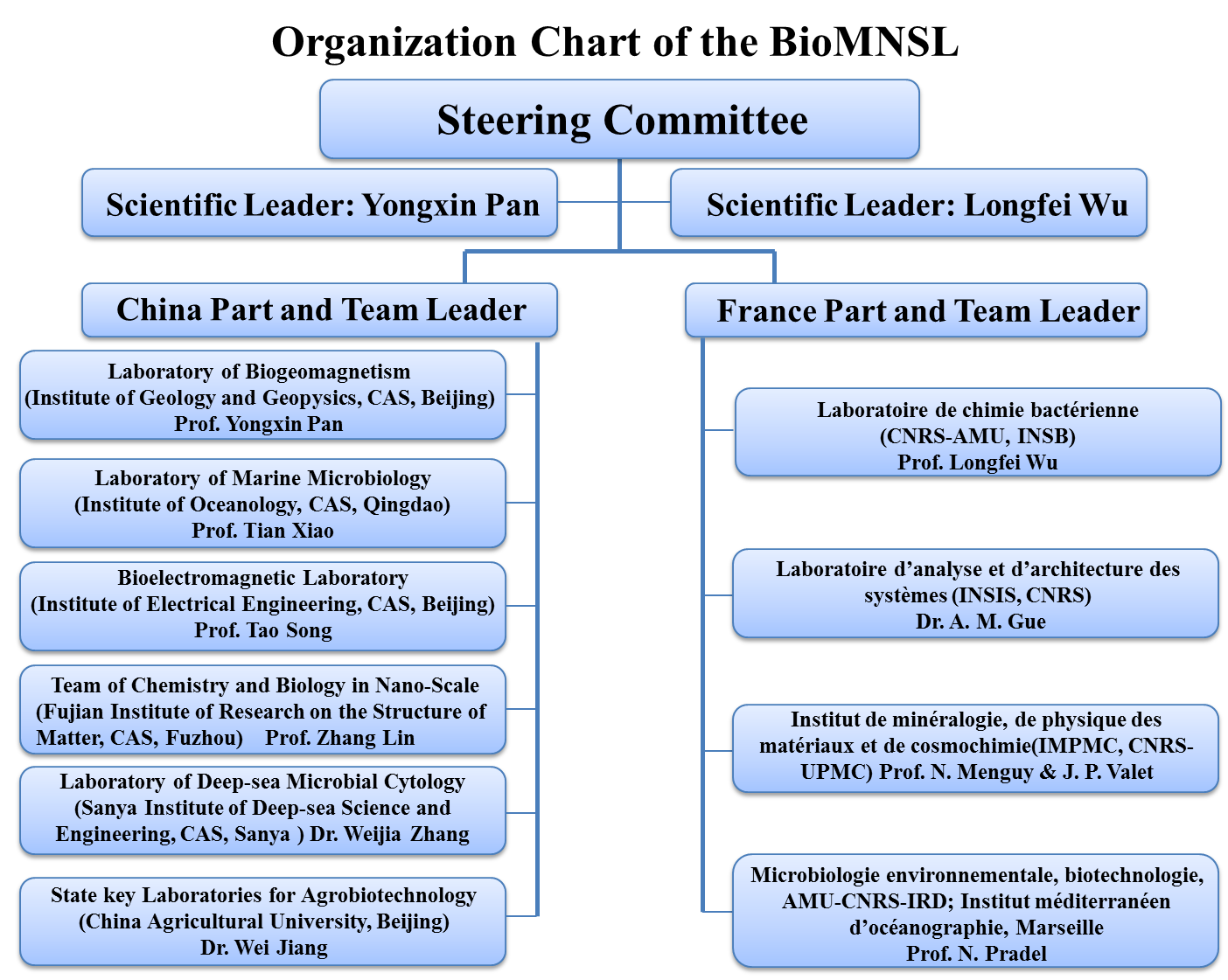


 Introduction
IntroductionIntroduction to BioMNSL
Subheading:
The creation of the France-China biomineralization and nano-structure laboratory (BioMNSL) was initiated at the end of 2007 by Chinese and French colleagues working on magnetotactic bacteria. This international scientific research laboratory was approved, on 2009, by the Chinese Academy of science (CAS) and the French National Center for Scientific Research (CNRS) based on the Sino-French scientific and technological exchanges and CAS-CNRS bilateral convention.
The central scientific interest common to all teams of BioMNSL is the mechanism of biomineralization of magnetic nanoparticles. It is a multidisciplinary topic encompasses earth science, physics, materials science, life science and nanoscience and technology. The bioMNSL teams possess required knowledge and expertise to carry out research and development projects of which the main objectives are to (1) investigate the role of microbes in recycling of elements, biomineralization, geological processes, and in structuring healthy ecosystems, and to (2) provide proof-of-concept for exploitation of microbial materials such as biogenic magnetic particles in advanced materials, medical sciences and bio-technology.
Current work of the BioMNSL involves: (1) diversity study, axenic cultures and genomic analysis of freshwater and marine magnetotactic bacteria (MTB) and other biomineralization bacteria, (2) mechanism of biomineralization of iron minerals (e.g., magnetosome) and their ecological and geological roles, (3) mechanism of magnetoreception and magnetotaxis, (4) impact of magnetic field on biological process, and (5) biomedical and biotechnological applications of biogenic magnetic nanomaterials (e.g., magnetosome and ferritin).
At present the BioMNSL has 10 teams, 6 from China and 4 from France. The two parties are highly complementary to each other in their research field. The China party has abundant investigate strength in biogeomagnetism, marine microbiology, synthesis and application of biogenic nanomaterials, and the France party has advanced technique and rich work experience in molecular biology, structural biology, electronic magnetic materials, microfluid and mineralogy. The BioMNSL is managed by two scientific leaders, Yongxin Pan and Long-Fei Wu, who are from IGG-CAS and LCB-CNRS, respectively. They are responsible for establishing the annual research program, provisional budget, and financial and scientific repots which thy present to the Steering Committee.
Up to now, the BioMNSL has held 3 bilateral symposia, published jointly 10 papers and trained jointly 10 French and Chinese students.
